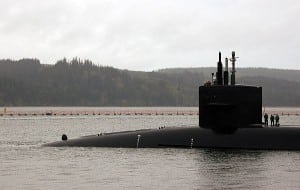
The Navy anticipates building its top priority—the Ohio replacement submarine—during a fiscally austere period where the shipbuilding account will be strapped for cash, but using a special, Defense Department-wide account would give the service new funding mechanisms that could save anywhere from 5 to 10 percent per ship, the Congressional Budget Office estimated.Congress created the National Sea-Based Deterrence Fund in the 2015 defense authorization bill to help the service start to begin saving for its newest boomers before lead ship…













